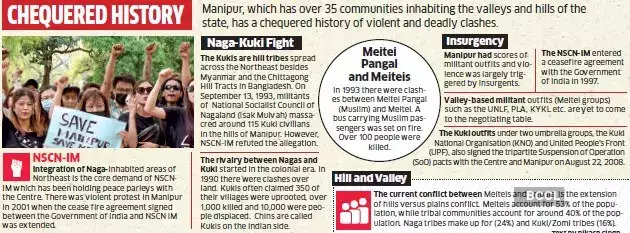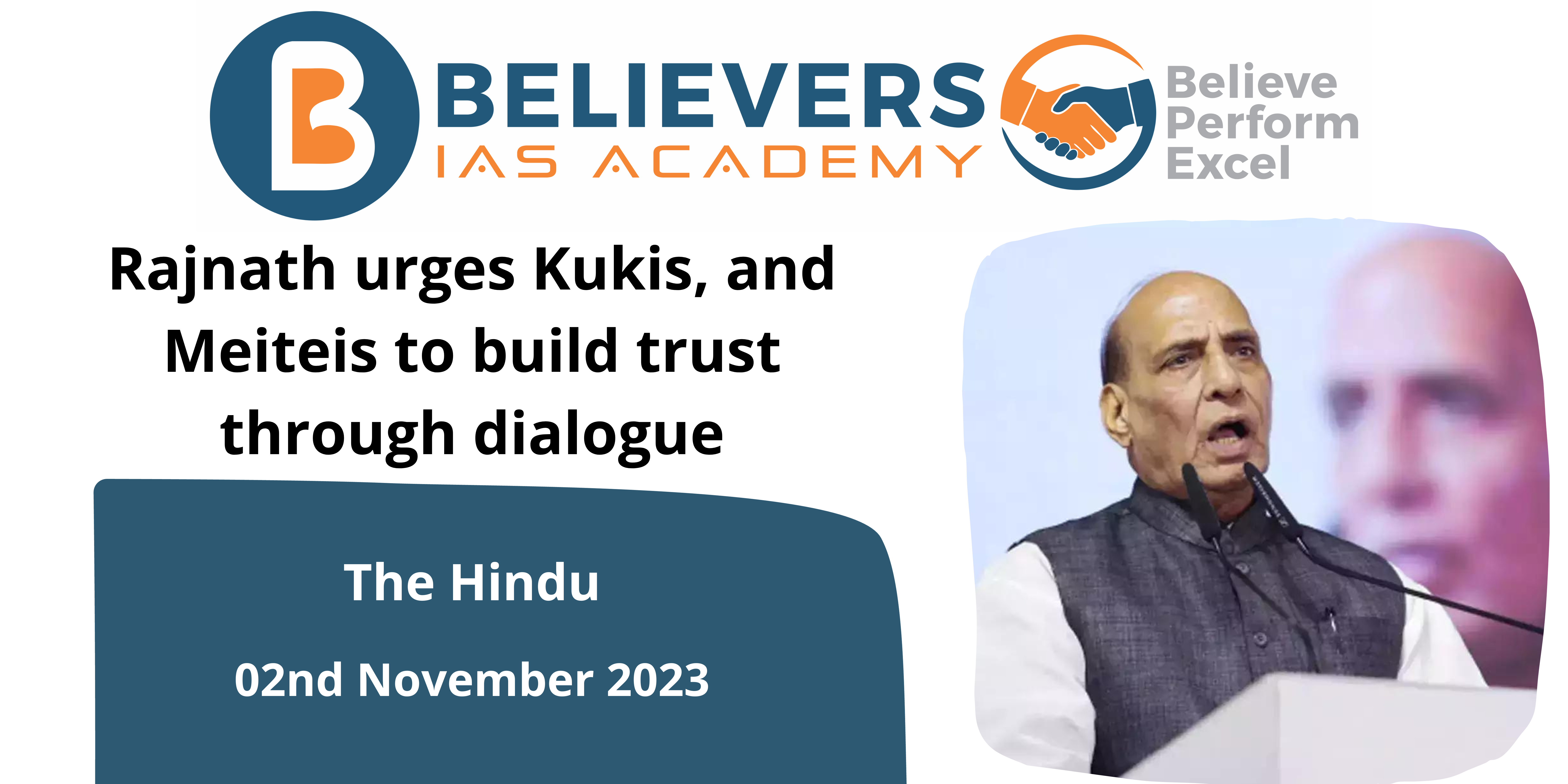Salvaging The Idea And Reality Of Manipur
Context:
The Meitei and Kuki-Hmar-Zomi communal riots that have been raging in Manipur since May 3rd have caused unprecedented levels of human displacement, sad deaths, and property damage, and they are still going strong.
Groups Involved

- Meitei community: According to India’s most recent census, which was conducted in 2011, the majority Hindu Meitei group, which is based in Imphal, the state’s capital, makes up more than half of the 3.5 million residents of the state.
The Meiteis have a presence in the hills in addition to being primarily based in the plains.
- The Naga and Kuki tribes: These two primarily Christian tribes make up around 40% of the population of the state and have “Scheduled Tribe” status, which grants them ownership rights to land in the hills and woods. They are the largest tribes that live in the hills.
The ethnic diversity of the state, which borders Myanmar, is also made up of other tribal tribes, such as the Mizo.
Cause of incident?
Violence in Manipur has gotten worse as a result of the Meitei community’s over ten-year-old quest for a Scheduled Tribe status. However, a Manipur High Court ruling requiring the state administration to recommend an ST tag for the group to the Union Tribal Affairs Ministry by May 29 is the immediate cause of this violence. Before Manipur’s union with the Indian Union, the petitioners claim that this community used to have the ST designation; they are now asking for the status to be reinstated.
Points to ponder:
- Community riots between the Meiteis and Kuki-Hmar-Zomi communities have resulted in record levels of human eviction, fatalities, and property damage. Law and order are still in a precarious situation as armed gangs and ragged mobs continue to spread the riots’ drama to nearby localities.
- The purposeful official cooperation in the seeming delay in enforcing the shoot-at-sight order in the valley areas appears to be done to provide ragtag mobs with the opportunity to carry out a thorough targeting and precise deletion of lives, properties, and land records (pattas).
- The widespread ethnic cleansing shows that Manipur’s geopolitical body has suffered severe injuries and undergone a profound transformation that is unrecognisable.
- The Meiteis’ main grievance against the tribal people in hill areas is that they have partially succeeded in eradicating tribal land rights in valley areas. This complaint was a key factor in creating the conditions for these conflagrations.
- The work of post-conflict state-building and transformation of state-society relations is going to be extremely difficult, if not impossible, due to the injuries and dramatic modifications produced by these riots to the geographical body of Manipur.
- The security and territorial integrity of Manipur is protected by true acknowledgement and substantive accommodation of territorial rights and identities, as well as by making these institutions function. The BJP government and Meiteis must understand this.
- If the populations of the hills and valley are to coexist under one political roof, the post-conflict situation may force a drastic reorientation of constitutional priorities. This would encourage a stronger Article 371C and a more sincere acceptance of tribal rights and identities under the Sixth Schedule.




